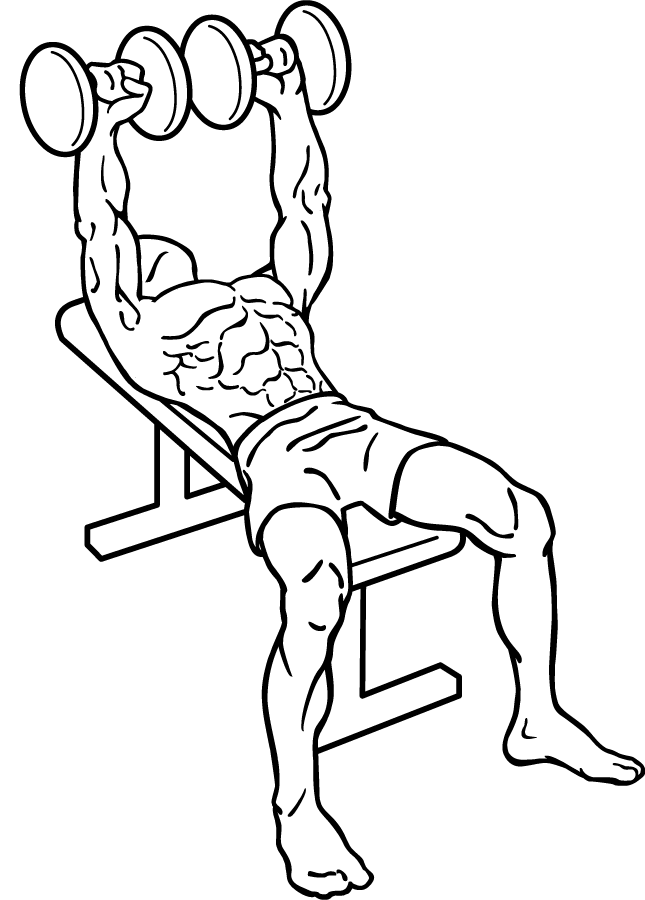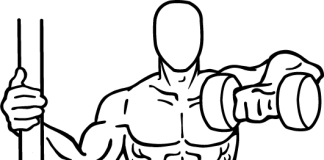Last Updated on September 30, 2022
The dumbbell bench press is a fundamental exercise that targets the chest, triceps, and shoulders. It’s a versatile movement that can be adjusted to suit various fitness levels and goals, making it a staple in many strength training routines. In this blog post, we’ll delve into the details of performing the dumbbell bench press correctly, discuss its benefits, and provide tips for optimizing your workout.
Why Choose the Dumbbell Bench Press?
The dumbbell bench press offers several advantages over its barbell counterpart. Here are some reasons why you might consider incorporating it into your workout routine:
- Improved Muscle Activation: Using dumbbells requires each side of your body to work independently, which can lead to better muscle activation and balance.
- Increased Range of Motion: Dumbbells allow for a greater range of motion compared to a barbell, which can enhance muscle flexibility and growth.
- Reduced Risk of Injury: The ability to move your arms freely reduces the risk of shoulder injuries often associated with the fixed position of a barbell.
- Versatility: Dumbbells are easier to adjust for different exercises and fitness levels, making them ideal for both beginners and advanced lifters.
Step-by-Step Guide to the Dumbbell Bench Press
To ensure you get the most out of this exercise while minimizing the risk of injury, follow these detailed steps:
- Setup and Positioning
- Begin by selecting an appropriate weight for your fitness level. It’s crucial to choose dumbbells that challenge you without compromising form.
- Sit on the edge of a flat bench with a dumbbell in each hand resting on your thighs.
- Carefully lie back on the bench while simultaneously lifting the dumbbells to chest level. Ensure your feet are flat on the ground for stability.
- Starting Position
- Extend your arms straight up over your chest with your palms facing forward. This is your starting position.
- Your wrists should be directly above your elbows, ensuring that your arms are perpendicular to the floor.
- Executing the Press
- Inhale deeply as you lower the dumbbells slowly by bending your elbows. Aim for a 90-degree angle at your elbows, with your upper arms parallel to the floor.
- Focus on maintaining control throughout the movement to engage your muscles effectively.
- Returning to Start
- Once you’ve reached the bottom of the movement, exhale as you press the dumbbells back up to the starting position.
- Ensure that you do not lock your elbows at the top; keep a slight bend to maintain tension on your muscles.
- Repetitions
- Perform 8-12 repetitions per set, depending on your training goals. Adjust the weight accordingly if you find it too easy or too challenging.
Tips for Success
- Warm-Up: Always warm up before starting any strength training exercise. Dynamic stretches and light cardio can prepare your muscles and joints for more intense activity.
- Maintain Proper Form: Focus on form rather than lifting heavier weights. Proper form ensures that you’re targeting the right muscles and reduces injury risk.
- Breathing Technique: Coordinate your breathing with each movement—inhale as you lower the weights and exhale as you press them back up.
- Progress Gradually: As you build strength, gradually increase the weight of the dumbbells. Avoid sudden jumps in weight which can lead to injury.
Common Mistakes to Avoid
To maximize effectiveness and safety, be mindful of these common mistakes:
- Arching Your Back: Keep your back flat against the bench throughout the exercise. Excessive arching can strain your lower back.
- Flared Elbows: Keep your elbows at a 45-degree angle from your body rather than flaring them out wide. This position reduces shoulder strain.
- Rushing Through Reps: Perform each repetition slowly and with control. Rushing can lead to poor form and reduced muscle engagement.
Incorporating Variations
Once you’re comfortable with the standard dumbbell bench press, consider incorporating variations to target different muscle groups or add variety to your routine:
- Incline Dumbbell Bench Press: Adjusting the bench to an incline targets more of the upper chest and shoulders.
- Decline Dumbbell Bench Press: A decline angle emphasizes the lower part of the chest.
- Single-Arm Dumbbell Bench Press: This variation challenges core stability as well as unilateral strength.
The dumbbell bench press is an effective exercise for building upper body strength and muscle mass. By following proper technique and incorporating variations, you can tailor this exercise to meet your specific fitness goals. Remember that consistency, patience, and attention to form are key components of any successful workout regimen.Whether you’re a beginner or an experienced lifter, integrating the dumbbell bench press into your routine can yield significant benefits in terms of strength development and overall fitness. So grab those dumbbells, hit the bench, and start pressing towards a stronger you!


Exercise images by Everkinetic.






